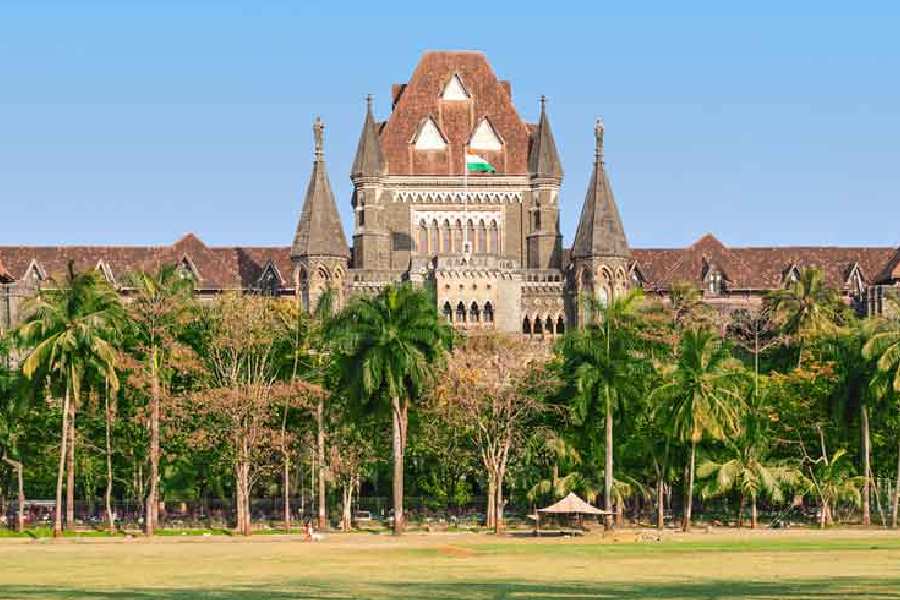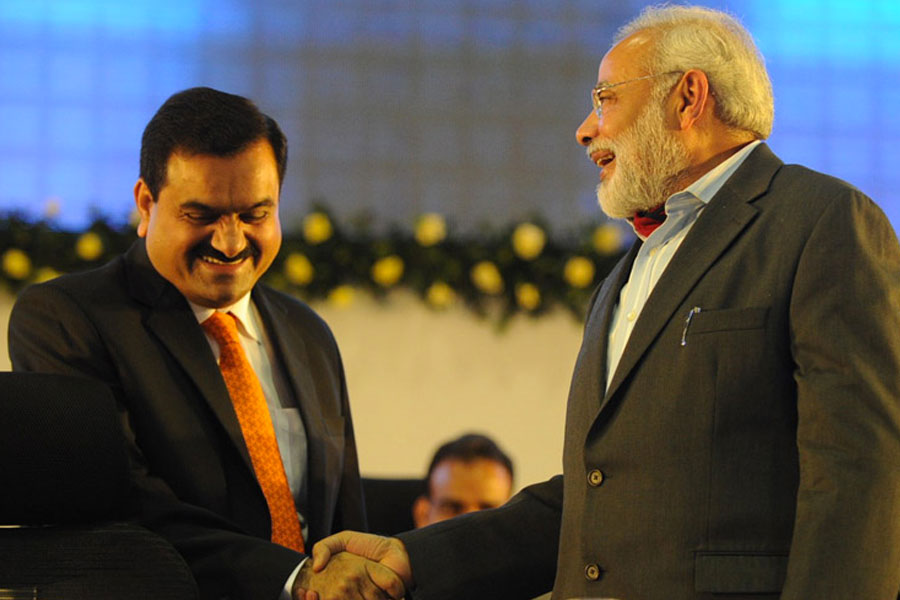 |
| With the Aravallis as a backdrop, the Devi Garh Spa is a favourite with wellness seekers |
Wouldn’t you like to be high on the feel good factor? And wouldn’t you like to feel squeaky clean (or cleansed) inside out in the bargain? How about digging into the latest spa menus that are suddenly becoming all the rage — the natural fall-out of the must-visit spas that are the current flavour of the season. Try bitter gourd soup mixed with white pumpkin or sip carrot, beetroot and white gheeya juice. It’s not bland, and it’s not boring. It’s fashionable and it’s pretty much haute cuisine.
But, let’s start at the very beginning. How would you recognise a plateful of spa food when it’s placed before you? And, how’s it different from bristling with goodness health food? “Like spa treatments, spa cuisine too offers body and mind therapy,” says Laxmi Paula Horan, director, Seven Palms Spa Consulting and the force behind Club Mud, a spa on Goa’s Anjuna Beach.
Restaurateur Suddha Kukreja, also a consultant for spa menus, has a slightly different answer. “Typical health food might recommend an oil-free, low carbohydrate and little sugar intake. But spa food makes a strong case for the betterment of the body without taking away from the goodness and taste of the food.”
 |
 |
 |
| (From top)a platter of healthy preparations from Devi Garh; a guest is served a spa thali at Kalari Kovilakom; a peek into the kitchen at the same resort |
So spa cuisine generously uses ingredients that health food or diet foods might oppose. Spa menus love their olive oil and sesame seed oil, herbs (for their benefits to the skin and kidneys), honey (to fight diseases) and more. Says Kukreja, “The target of spa cuisine is a healthier body rather than a trimmer or slimmer body.” Over-cooking is ruled out as the trick lies in the rawness of the ingredients. “This way the nutrients aren’t lost,” she says. Also, the bottomline of a spa menu is not to radically cut on calories, but the holistic cleansing of the body.
So, it may sadly be time to dump those sinful chocolate biscuits and go for organic cookies and bread that’s a pot pourri of high-fibre barley, oats, wheat husk and dalia. But if you have an unputdownable craving for something more exotic, low fat sushi will certainly do the trick and it’s still on the menu.
Or do smoked tiger prawns on raisin cous cous and basil coulis sound nicer? But remember that you must also keep room for vegetable juice laced with doses of honey and ginger. And just by the way, did you ever think that your favourite south Indian fare of plain dosa or tomato uttapam with ginger coconut chutney could qualify as spa cuisine? Well, they do and they are safe bets for a healthy meal, if cooked right.
Kamayani Kanwar, the woman behind Asian Roots Spa too is toying with the idea of introducing a regular spa menu. She says that the perfect ingredients that must go into a spa meal are leafy vegetables, seeds, nuts, and low fat dressings. She says, “Fish is a healthy anti-oxidant while broccoli is rich in calcium, so having it is like having a glass full of calcium. These are perfect ingredients for spas.”
Since spa cuisine is the latest fad for wellness worshippers, they are seeking it everywhere: in exotic resort spas that dot the country’s farthest regions, in happening speciality restaurants close to home and quite simply, even at home (so try the recipes in the box).
While fine dining restaurants often tom-tom spa spreads, spa menus are also hotsellers in mountain retreats like Ananda in the Himalayas or in the hot, arid environs of Rajasthan’s Devi Garh. You could also head to places like Vengunad (Kerala) and of course, a stone’s throw away from Calcutta, Vedic Village. These kitchens that follow strict health guidelines appear to be the order of the day.
Chefs and spa consultants are busy putting together specialised menus across these resorts and restaurants (sometimes clearly stating the exact calorie count of each dish). At Vedic Village, the 120-room spa resort just 25km from the city’s centre, you can expect an extensive wellness menu of appetisers, soups and salads, the main course and health drinks.
The menu was created by Vedic Village general manager Ravi Mohapatra, in consultation with wellness specialists, Dr Moloy Dutta and Dr Mainak Chakraborty. The main accent here is on low-fat, high-fibre organic food that’s largely cooked in cold pressed virgin olive oil or sesame oil that are high HDL factor (that’s the cholesterol level of good fat).
The hot-sellers here are dishes like the Wellness Super Roll (mixed cereal bread with vegetables and tofu topped with lime, coriander and humus), Popeye’s Favourite (organic spinach in vegetable stock), Tofu and Palak curry and risotto made of organic brown rice.
Says Mohapatra, “The gravies are freshly cooked, are light and easy to digest.” His menu goes heavy on herbs, rock salt and sugars that are derived from the stevia plant. Sometimes black papaya seeds are used as an alternative to pepper.
Cut all the way to the Aravallis in Rajasthan and you arrive in Devi Garh, another popular spa that has become a favourite haunt for wellness seekers. “Food is an integral part of health and rejuvenation packages, so our expert chef does a lot of research and comes up with special spa menus,” says B.Venkatesh, director sales and marketing. At Devi Garh, guests who step across the threshold start off with a welcome drink made with cucumber and lemon grass that’s plucked from the heritage resort’s own garden.
The spa menu is rich with ingredients such as chilled pistachio and artichoke, raw papaya and mango, bell peppers, goat cheese, roasted onions, croutons and smoked asparagus. If you have an incorrigible sweet tooth, don’t despair. Even the desserts are healthy (though sugar free) indulgences. Try the black pepper ice cream (a tricky combination of black pepper with steamed chestnut) or yoghurt that comes with Orange Mousse Cake.
Each day dawns to different menus in CGH Earth’s Kalari Kovilakom in Vengunad, and far away Ananda in Rishikesh. Yoga and meditation sessions, fitness workouts and invigorating massages are topped up with food that’s based on Ayurvedic concepts.
In both Kalari and Ananda, the menus are based on the Ayurveda template of the three body types or doshas — vata, pitta and kapha. The food types for each doshas vary. Which means that sweet, sour and salty food benefits vata body type but for pitta body type, sweet, bitter and astringent flavours work best. But kapha people do best with pungent, bitter and astringent flavours.
 |
 |
| Vedic Village’s Super Wellness Roll (from top); Baked Camembert Cheese Tart from Ananda, recommended for the pitta body type |
Jose Dominic, managing director, CGH Earth, describes the Kalari Kovilakom experience as a cross between a spa and a hospital. Kalari Kovilakom, a palace built in the 19th century, goes back in time with its Ayurvedic regimens.
Guests must stay here for a minimum of 14 days or as long as three or four weeks. As they come looking for detoxification, anti-ageing and anti-stress programmes, the food they eat is based strictly on what the doctors order for them each day.
“Meals are cooked specifically for each individual guest and so there could be as many different dishes cooked in a day as the guests staying in Kalari,” says Dominic.
Kalari’s Chef Narayan Nair has a bag full of healthy dishes such as yellow pumpkin and drumstick soup, papaya and carrot salad and tomato rice. Depending on your body type, you may be served Vazha Pindi Pachadi (banana stem), Cherupayar Kanji (green gram cooked with brown rice) or spinach or drumstick curry. Each day guests are restricted to an intake of 1,000 calories. And yes, Dominic confirms, guests leave Kalari a lot slimmer.
On arriving at Ananda too, the dishes are customised for guests. The food is prepared by balancing vitamins, carbohydrates, fibre and even fat. All the food is cooked in olive oil. “All these components are indispensable for a perfect spa dish,” says executive chef Subhrajit Bardhan of Ananda. Here too chefs take care to keep the different doshas in mind as they cook up a storm.
For instance, vata people have weak digestion, so ginger, ajwain (carom) and jeera (cumin) are added to dishes. For kapha type, cinnamon, cardamom and garam masala are added to the food so that the body temperature ups a little, which in return melts the body fat. “Some people lose about 6kg to 8kg in 10 days,” adds Bardhan.
The chef at Devi Garh too makes it a point to interact with the guests before charting out dishes and menus according to their preferences. “Whatever the package, food is never repeated, so the guest gets to taste something new everyday,” says executive chef Vimal Dhar.
Not to be outdone in roping in disciples of healthy eating, specialty restaurants are also padding up on their spa menus. Solace, the day spa at Calcutta’s Sunny Park offers a mean spa lunch. The only catch is that a group of at least eight must book the meal in advance.
Diners can dig into Italian, Continental, Mexican, Chinese and Thai menus — but all packing in a healthy punch. Priced at Rs 500 per head for vegetarians and Rs 650 for non-vegetarians, the spa lunch also throws in a drink and even a complimentary treatment (but don’t expect a sinful body wrap, settle for a hand/foot reflexology session or a neck massage).
Delhi’s happening Olive Bar & Kitchen too has experimented with spa menus and with great success while Kukreja’s five speciality dining restaurants can drum up a typical spa dish if the guest requests it. Meanwhile her seafood restaurant, Ploof, often has spa lunch festivals.
And there’s plenty to look forward to as the Pujas approach. The city’s spas may gear up with wholesome dishes while Vedic Village is set to cook up a brand new spa menu to celebrate — this time based on Ayurveda and in consultation with Dr CM Pradumna.
This is pampering at its best: of the mind and body. And, think of it, all that goodness and your tastebuds will also approve.
Staying healthy at home
Try a few Kalari Kovilakom recipes crafted by Chef Narayan Nair:
Tomato and Celery Soup
Ingredients: 2 cups chopped tomato; 1/4 cup chopped celery; 2 tbs coriander stems, chopped; 1 carrot; 5 cloves garlic; 1 tsp ginger; 1 tsp pepper; salt
Method: Boil the ingredients (except the salt and pepper) with 6 cups of water. Make a purée and strain. Add the salt and pepper. Serve hot and garnish with coriander or parsley.
Tomato Rice
Ingredients: 3 cups cooked rice; 1 cup tomato (seeded and chopped into cubes); 1 tsp chopped ginger; 1/2 tsp turmeric powder; 1/2 tsp coriander powder; a pinch of mustard seeds; a pinch of cumin seeds; half a pinch of asafoetida powder; a few curry leaves; a little channa dal and a few cashewnuts; 2 tsp oil; salt to taste; a few coriander leaves
Method: Heat oil and add mustard and cumin seeds, channa dal and cashewnuts. When the mustard crackles and the nuts get roasted, add tomato, turmeric, coriander and ginger. Stir for a few minutes and add rice and stir well. Sprinkle asafoetida, coriander leaves and salt. Stir well and serve.










